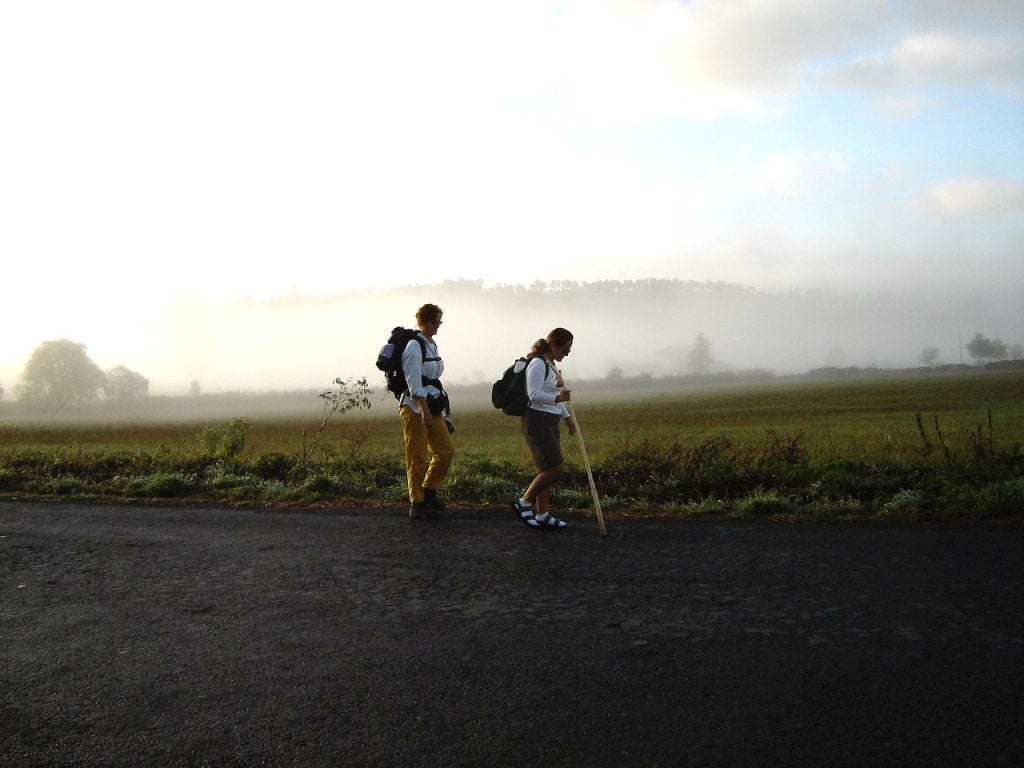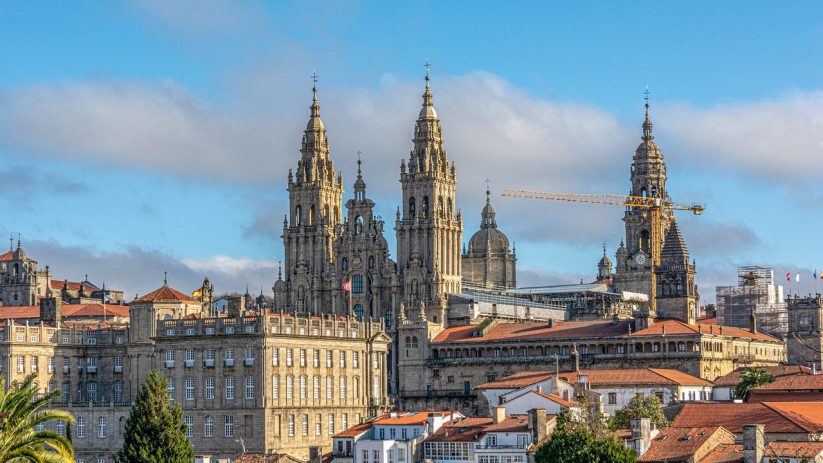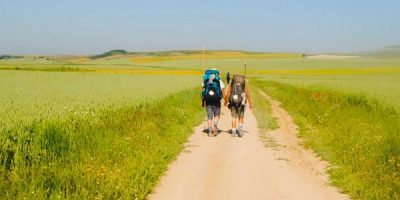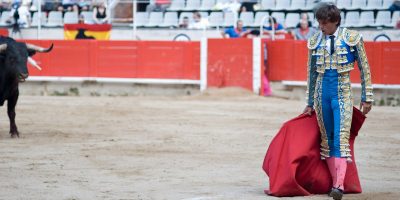The Road to Santiago
There are three questions hikers and pilgrims ask each other when walking the 1,600-kilometre Santiago de Compostela, or Camino, pilgrimage trail. Where are you from? How far have you walked? How are your feet? The Road to Santiago.
A fourth question, “Why?” usually only comes after you’ve shared a bottle (or two) of wine at a crowded table, the exhaustion of the day almost forgotten in the well-being of a full stomach and the camaraderie around you.

The Road to Santiago. The Camino is a 1,000-year-old pilgrimage trail with different starting points all over Europe. The end result is the same though – the Cathedral in Santiago, Spain, where the bones of the apostle Saint James are supposedly buried. Along the way, you’ll get many opportunities to ask yourself, “Why?” My husband, Evan, and I found it took hiking up hills in the rain on slippery stone paths, trudging along ancient Roman roads in 38 C temperatures, or trying to find our beds in a room of 50 snoring new friends to even begin to comprehend why anyone would do such a physically demanding holiday.
We began our Camino, The Road to Santiago, in the medieval French town of Le Puy-en-Velay, one of the original starting points. Our plan was to walk 20 to 25 kilometres a day, which would get us across France, over the Pyrenee Mountains, and into Santiago, near the west coast of Spain, in 10 weeks, each of us carrying a small backpack filled with the bare minimum of clothes and toiletries.
Before leaving Le Puy, we attended the 7 a.m. pilgrim’s Mass and blessing in the Cathedral of Notre Dame. One of the priests officiating took off his cassock at the end of the service, revealing jeans and a white shirt and promptly announced he too was walking the Camino. We heard he was taking his “petite Canadienne” with him. It turns out in France a “little Canadian” refers to a pup tent. (We also discovered the rolling cattle grids used to stop cows from crossing from one field into another are called “passage Canadien.”)
Did I train? A bit, but I just assumed the first week would be a tough slog. It actually took nine days of throbbing legs and aching feet before my body got into the Camino rhythm. What I hadn’t realized was that my feet would be sore at the end of every day of our trip. When we live an urban life, our feet aren’t in shape to take the pounding, climbing, sliding, and stumbling up – and down – mountains, through rocky stream beds, and on long stretches of stone or asphalt roads for six to eight hours a day, week after week, for two and a half months.
The people we met along the way fit into one of two categories. “Hikers” were on the trail for a variety of secular reasons. Two Irish couples were celebrating both retirement and a 60th birthday. Romanian judge Dana needed a break from her very stressful job. A young man from Austria had just finished his compulsory military training and wanted a cheap holiday before attending university. “Pilgrims,” on the other hand, walked with religious intent, hoping to have a spiritual experience, or find relief from grief, or to give thanks for no longer being ill. The Road to Santiago




I walked alone el camino de Santiago many moons ago. Thank you for your tale. Today in Mexico I still dream about it.
It stay with you a lifetime
One day I will bring my girl up here and explore this amazing trail… been hearing about this since 2009, so its about time to get this feet up there
Thank you.
Your story is beautiful and above everything, inspiring.
So thank you for the inspiration.